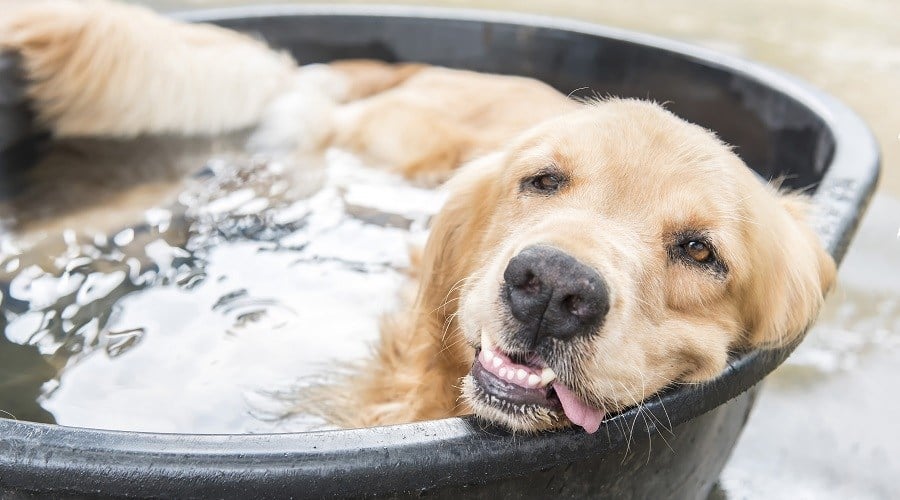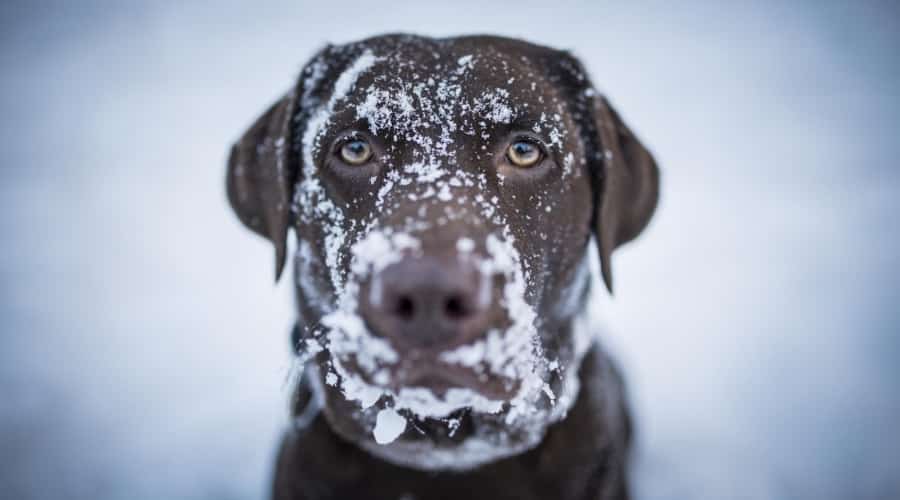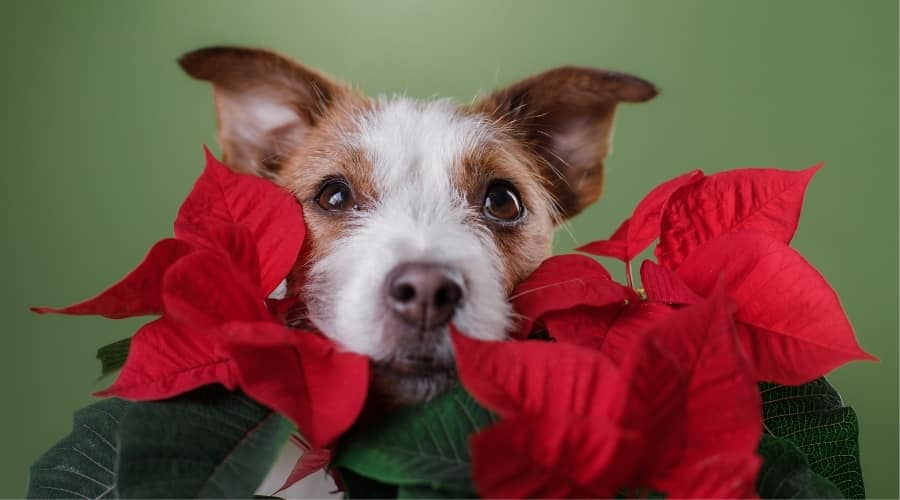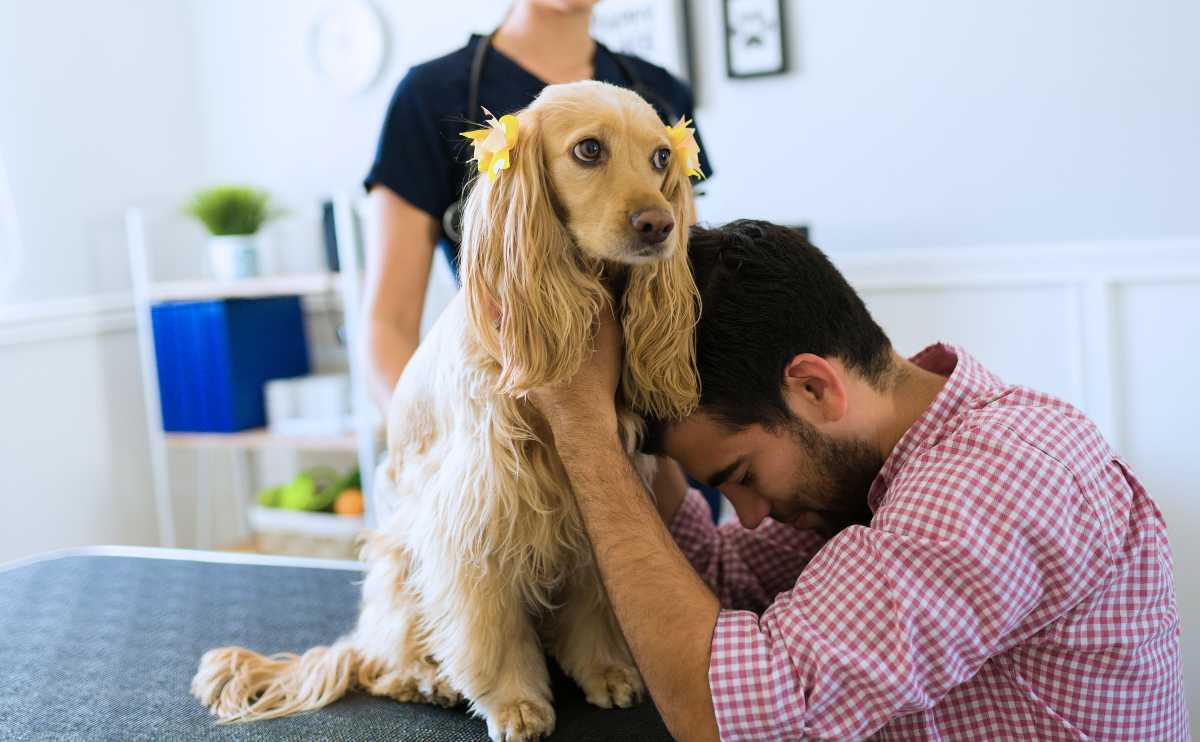Vet Warns: If Your Dog Eats A Tennis Ball, Do This Immediately!
When you purchase through links on our site, we may earn a commission. Here’s how it works.

Some dogs love to chew. It doesn’t matter if it’s a stick or even something touted as “safe.” If your pup is a chewer, it won’t be long before tennis balls may be the next victim of your dog’s chewing tendencies. As a vet, I’ve seen it happen too many times. A dog is happily playing fetch, full of energy, tail wagging, and then, in a split second, the ball is gone. Not in the grass, not under the couch, but lodged somewhere inside their body. Their owner panics, unsure if they should wait and see or rush to the clinic.
Table of Contents
If your dog just ate a tennis ball, this is an emergency, even if they seem fine right now. Depending on how they swallowed it, your dog could be choking, struggling to breathe, or at risk of a deadly intestinal blockage. You don’t have time to wait and see what happens. A full-sized tennis ball won’t just “pass” on its own in most cases. Delaying action could mean the difference between a simple procedure and a life-threatening surgery.
In this article, I’ll break down exactly what you need to do right now and why waiting could be a fatal mistake. If your dog just swallowed a ball, don’t scroll away – this could save their life.
Can Eating A Tennis Ball Harm My Dog? 4 Dangers
Tennis balls seem like the ultimate dog toy – lightweight, bouncy, and easy to throw. But as a vet, I’ve seen countless cases where a simple game of fetch turned into a life-threatening emergency. While many dogs safely play with tennis balls for years, the risks are greater than most owners realize. From choking hazards to toxic materials, here’s why standard tennis balls may not be as safe as they seem.

1. Foreign Body
Tennis balls are made of synthetic materials like rubber and plastic, which the body cannot digest. This means that if they are swallowed and enter the gut, they will have to come back out whole. They will come back out either via the mouth or at the other end! Once the tennis ball or any part of it has entered the gut, it is known as a foreign body or foreign object. It then poses a risk of bowel obstruction.
The gut is long and often narrow. This makes it very easy for them to get blocked, and this is the main risk for dogs. Bowel obstructions are very serious and can be life-threatening. Don’t panic, though! There are plenty of actions veterinarians can take to help your dog. And this is true, even if the whole ball is swallowed. But you must seek help at the earliest opportunity for the best outcome.
A blockage can cause severe symptoms, including:
- Vomiting
- Loss of appetite
- Lethargy
- Abdominal pain
- Straining to poop with little to no success
Unlike some small foreign objects that pass naturally, a full-sized tennis ball won’t make its way through in most cases. It will need to be removed surgically, which is invasive, expensive, and risky. If left untreated, an intestinal blockage can cut off blood supply to the intestines, leading to tissue death and life-threatening complications.
2. Choking Hazard
Tennis balls and other smaller balls can also pose a choking hazard to dogs. Again, this can be a veterinary emergency as the ball may block the airway. One of the biggest dangers of tennis balls is that they’re the perfect size to get lodged in a dog’s throat. Dogs with strong jaws, like Labradors, German Shepherds, and Pit Bulls, can easily compress a tennis ball just enough to squeeze it past their teeth and into the back of their mouth. Once there, it can completely block their airway, leading to suffocation in seconds.
Unlike smaller objects that might be coughed up, a lodged tennis ball is nearly impossible for a dog to remove on their own. If you ever see your dog suddenly gagging, pawing at their mouth, or struggling to breathe after playing fetch, act immediately – this is a medical emergency.
3. Damage To Teeth
Most people don’t realize that standard tennis balls aren’t made with dogs in mind. They’re designed for the tennis court, not a dog’s mouth. Many contain toxic and abrasive materials, including glues and dyes that can be harmful if ingested over time.
Even if your dog never swallows a tennis ball, they might still suffer long-term damage from chewing on it. The fuzzy outer layer is incredibly abrasive. Think of it like sandpaper rubbing against your dog’s teeth. Over time, this can wear down the enamel, leading to:
- Tooth fractures
- Painful gum infections
- Increased risk of tooth loss
4. Joint Damage
Tennis balls should also be avoided in older dogs. The act of throwing a ball and playing fetch can put a lot of pressure on joints. Older dogs are potentially at risk of arthritis in their legs, and the twists, turns, and high speed of fetch can be quite damaging on top of this. Steady and controlled exercise is best and can still provide plenty of physical and mental stimulation.
3 Safer Alternatives To Tennis Balls
If your dog loves playing fetch, you don’t have to take the fun away. Just swap out their tennis ball for something safer. There are plenty of dog-friendly alternatives designed specifically for play without the risks. Some of the better options include:
- Soft, Non-Abrasive Dog-Friendly Balls. These are the most similar to traditional tennis balls, but these tennis balls for dogs are designed specifically for canines and their teeth.
- Rubber Fetch Balls. These rubber balls for dogs are designed to be durable, non-toxic, and the right size to avoid choking hazards.
- Large, Indestructible Chew Toys. These indestructible dog toy options are perfect for pups who tend to obliterate their toys and stop at nothing until they destroy them.
Whatever option you choose, you must ensure you match the ball or toy to your dog’s size so it’s not too small for them to swallow.
My Dog Ate A Tennis Ball, What Should I Do?
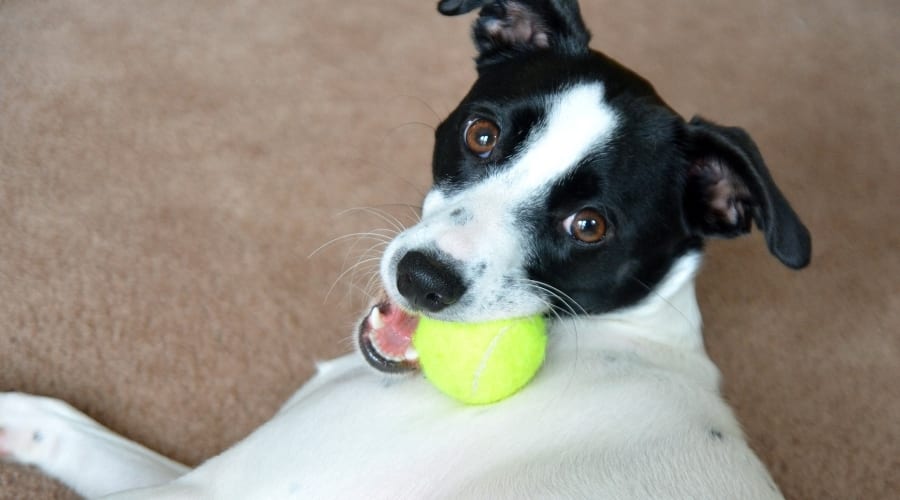
If your pup ate parts of their favorite tennis ball, there might not be any harm. This all depends on what was swallowed. Even still, there are a few steps you’ll want to take, including consulting your vet. Follow the steps below to ensure Fido has the best chance of having no impact due to their chewing habits.
Step #1: Remove The Ball & Any Pieces
Make sure you remove any remaining bits of the ball, or any further balls, well away from your dog. This is to ensure that no other foreign objects get swallowed while you have your back turned! If it is safe to do so, try and get any other bits of material or ball out of their mouth.
Step #2: Figure Out How Much Was Eaten
Try and work out roughly what was eaten and when. This is important, especially depending on the size of your pet. Small dogs that have eaten quite a bit of rubber may be more at risk of obstruction simply because their intestines are smaller than larger dogs.
Step #3: Call Your Veterinarian
Make contact with your local veterinary clinic straight away for further advice. They will ask about what has happened, any background information you have, and any symptoms of distress that may be showing. Based on this, they will be able to provide tailored professional advice for you and your pup.
Step #4: Follow Your Vet’s Instructions
Follow the instructions of the veterinary clinic. They will usually recommend a visit and a check-up, but the advice may be given over the phone in some circumstances. It is best to take their advice seriously, as it will be in the best interests of you and your canine companion.
What Happens If My Dog Eats A Tennis Ball?

In The Throat
If a tennis ball is lodged in a dog’s throat, immediate veterinary intervention is critical to prevent suffocation. Upon arrival, the vet will first assess whether the dog is still able to breathe. If the airway is completely blocked, they may attempt to remove the ball using forceps or specialized extraction tools manually. In severe cases, an emergency tracheotomy (creating an opening in the windpipe) may be necessary to restore airflow while they work to remove the obstruction.
If the ball is partially lodged but the dog is still breathing, sedation may be required to safely extract it without causing further damage. In some cases, an endoscope (a flexible camera-equipped tube) can guide removal, but surgery may be the only option if the ball has moved deeper into the esophagus. Time is of the essence in these situations, which is why acting fast and seeking immediate veterinary care can be the difference between life and death.
External Extraction Technique (XXT)
In some cases where a tennis ball is lodged in a dog’s throat, veterinarians or trained professionals may use the External Extraction Technique (XXT) as a lifesaving maneuver. This technique involves manually compressing the ball from the outside of the throat to help push it back up and out of the airway. Unlike the Heimlich maneuver, which relies on abdominal pressure to dislodge an obstruction, XXT specifically targets the ball itself by applying firm, controlled pressure on the sides of the neck. This method can be effective for larger, compressible objects like tennis balls, especially if they are stuck near the back of the throat.
However, it must be performed carefully to avoid crushing the airway or causing additional trauma. While XXT has been successfully used in emergency situations, it should only be attempted if a vet or trained professional is not immediately available and the dog is at risk of suffocation. Even if the ball is successfully removed, a follow-up vet visit is essential to check for throat injuries or inflammation caused by the obstruction. Watch this video about XXT and how vets use it.
In The Stomach
Initially, the ball will enter the stomach. There, it will irritate the lining of the stomach and block the exit from the stomach into the intestines (the ‘pylorus’). This can cause vomiting and discomfort and will usually cause them to stop eating. In lucky cases, the ball or its parts may be vomited back up again, but this is not always the case. These symptoms will start after 30 minutes to 12 hours.
In The Guts
If the foreign objects exit the stomach and pass into the intestines, there is a long and winding path to the outside world at the other end. The ball will irritate the lining of the gut and cause damage. At any stage, it may become wedged in the gut and cause a bowel obstruction. The initial signs of a bowel obstruction include lethargy, vomiting, pain, restlessness, and loss of appetite. This may be followed by diarrhea or constipation, too.
Dogs show tummy pain by stretching out their body with their bottom in the air. This is known as a prayer position, as it looks like they are bowing to pray. The symptoms of a gut obstruction will start 12-72 hours after eating a ball. It usually takes 2-5 days for a foreign object to come out the other end for lucky dogs. But it could get stuck at any point.
Bowel obstructions are a big problem because they put a lot of pressure on that section of the gut. This causes it to become very inflamed and lose its blood supply. As the situation progresses, the gut will start to thin, die, and even split open. If the guts start to split open, contents will leak into the abdomen. This can rapidly cause a massive infection and, unfortunately, is a life-threatening emergency.
Don’t Panic!
At any stage, with the right professional help, we can intervene to give your dog the best chance of a successful outcome! It is vital to seek help early, as the sooner these problems are identified, the easier they are to fix. The longer it is left, the worse the consequences may be.
How Is A Swallowed Tennis Ball Treated?
Your vet will be able to assess your dog’s risk and help you treat them as best they can. They’ll go through the risks, benefits, and costs of each option so you can make an informed decision.
1. Monitor
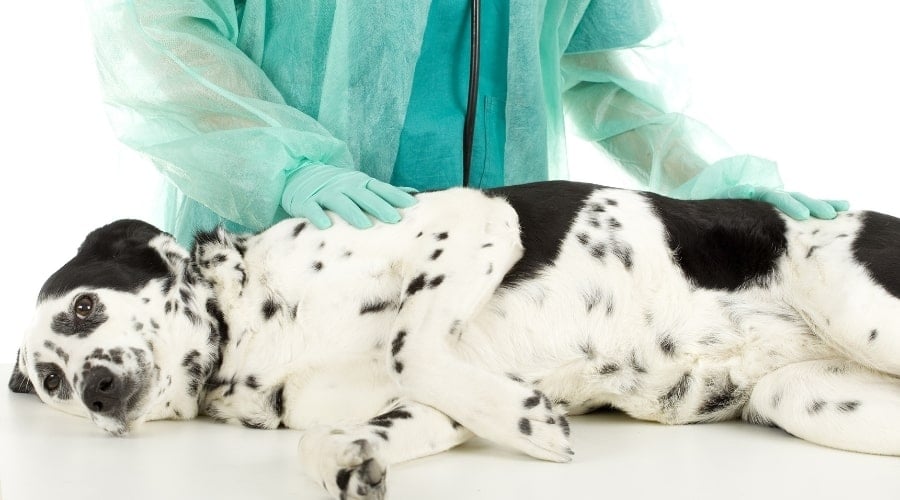
Some of the risks of bowel obstruction are based on size. This means that if a big dog has eaten a very small part of the tennis ball or if the dog has just eaten a bit of the soft, fuzzy outer section, it may be reasonable to allow this to pass through the dog. However, if a small dog has eaten a large chunk, then this is a greater danger.
This decision should only be made by a veterinarian as their professional experience is vital. Having discussed the situation with you, the veterinarian may recommend carefully monitoring your dog over the following days and allowing the object to pass through under supervision. This is never risk-free, and intervention may be needed if you see symptoms of problems or blockage.
2. Induce Vomiting
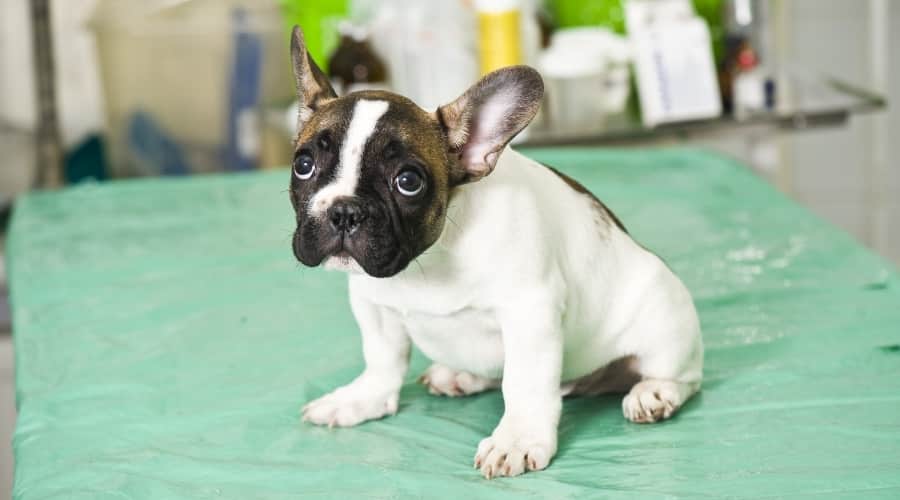
If your veterinarian advises that the risk of obstruction is significant, then we need to intervene. If Fido has swallowed a ball or parts of it within the last four hours, it may be possible for the veterinarian to give your dog a strong, reliable injection to induce vomiting and bring the objects back up that way.
This is the safest option in many cases if the problem is caught early, although it should not be attempted at home unless your vet asks you to. There is a risk it will get stuck on the way back up again, blocking the gullet (food pipe) and putting pressure on the windpipe.
3. Investigate Further
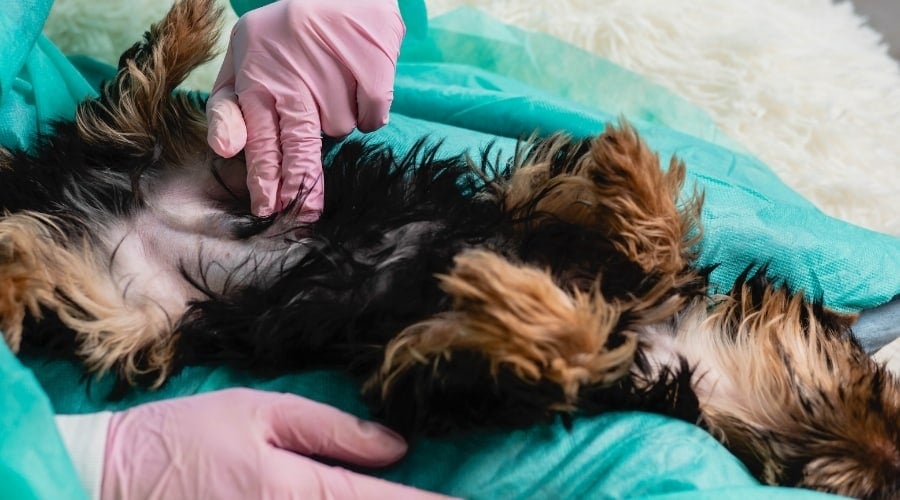
If you see any symptoms of vomiting, diarrhea, lethargy, pain, and loss of appetite, or more than four hours have passed since they swallowed a tennis ball, more serious interventions are required. Your veterinarian will perform a full clinical examination and discuss the situation with you to fully understand your dog’s background and symptoms.
Often, they will then recommend imaging of the tummy, sometimes by X-ray but sometimes also by ultrasound. This is done to try and identify foreign objects and their location. Unfortunately, foreign objects like balls do not usually show up on X-ray pictures. However, veterinarians use experience and judgment to identify patterns within the guts that represent inflammation or blockage. In some less clear-cut cases, repeated X-rays are required over some time to look for the evolving changes in the patterns.
4. Consider Surgery
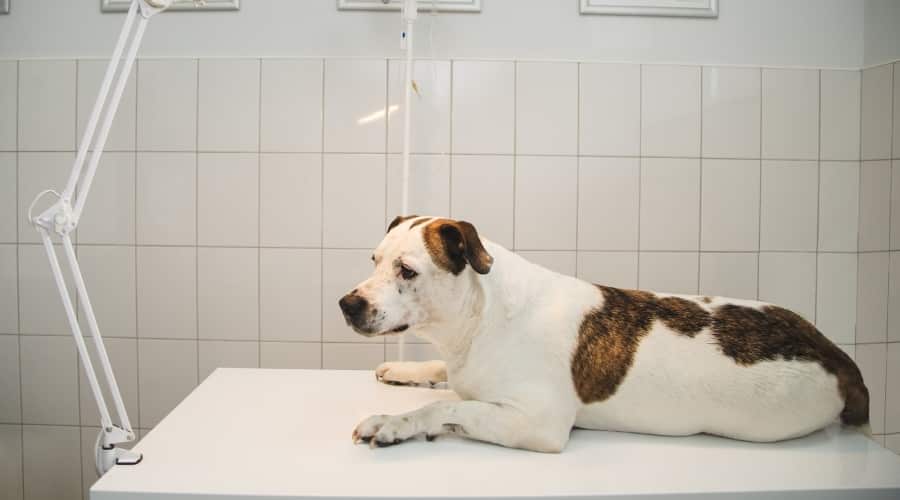
If your veterinarian suspects your dog has a bowel obstruction, then urgent surgery is recommended to retrieve the foreign object before it damages and breaks open the intestines. There is no other alternative.
Although this is frightening for you, these are relatively routine procedures for veterinary clinics. Dogs do like to swallow things they shouldn’t quite frequently! If the problem is quickly identified and the surgery performed early, the blockage can be relieved before the guts are severely damaged. This is the best-case situation, and most dogs recover rapidly.
Where problems have been left, and the guts are more damaged, the surgery can become more complex and carry greater risk. If the guts around the blockage are dead, these need to be removed. Recovery from this kind of surgery takes longer (up to two weeks) and is associated with more problems post-operatively. All intestinal surgery carries a risk of abdomen infection (‘peritonitis’), but this is much more of a risk where the guts are damaged and need removal.
How Pet Insurance Can Save You From A Costly Emergency
No one expects their dog to swallow a tennis ball, but as a vet, I’ve seen it happen more times than I can count. And when it does, the vet bill isn’t cheap. According to Lemonade Pet Insurance, if your dog needs emergency care for an obstruction, you could be looking at anywhere from $2,000 to $10,000 for surgery, depending on the severity of the case. If complications arise, like intestinal perforation or infection, costs can skyrocket even higher. And that’s just for this one accident. Factor in medications, illnesses, and other unexpected emergencies, and pet owners can easily spend thousands of dollars on veterinary care each year.
This is where pet insurance can be a game-changer. Instead of facing a massive bill on your own, insurance helps cover a significant portion of your dog’s medical expenses. So now you can focus on getting them the care they need without financial stress. Our pet insurance experts have found the best pet insurance for canines to help you find the right cover for you. We also have a free quote engine below for you to explore your options.
Tennis Ball Take Away
Swallowing a tennis ball or any other foreign object that the gut cannot digest is a potentially life-threatening risk to a dog. Tennis balls do carry risks in general. It’s definitely worth using dog-specific, purpose-designed toys if possible. These are less likely to cause problems.
If you do use tennis balls, ensure they are too big for your dog to swallow. Regularly swap them for fresh balls so they don’t break down into more easily swallowed chunks. If you suspect your dog has eaten a ball or parts of one, contact your veterinary clinic without delay. Discuss the situation with them for tailored advice for your pup.
Frequently Asked Questions
We know dog owners might still have questions about their beloved pup and the dangers of swallowing a tennis ball. If you don’t see yours below, let us know in the comments, and we’ll find the answer for you.
Will My Dog Be Okay If They Ate A Tennis Ball?
Swallowing a tennis ball is always dangerous for a dog to do. However, if we take early and decisive action, then most dogs will make a complete and rapid recovery. The most important thing is to seek professional help at an early stage. If this problem is dealt with early on, the risks are very low. If this problem is left to the point where intensive surgery is needed, unfortunately, the danger is very severe and can be fatal.
A tennis ball really can potentially kill a dog. Your dog’s best chances are with rapid treatment. Needless to say, a dog that needs a quick intervention will also be a lot cheaper than one requiring major surgery and a long post-operative stay at the veterinary clinic to recover.
What Happens If My Dog Ate Tennis Ball Fuzz?
In most cases, the fuzz will just pass through their digestive tract, and you’ll see it in their feces. But if you have a small dog, it’s worth contacting your veterinarian just to be safe. While the fuzz isn’t digestible, it’s usually broken up into smaller pieces. Even so, you should always contact your veterinarian if you have questions.
My Dog Ate A Tennis Ball And Is Throwing Up. What Now?
If your canine companion is throwing up, you need to contact your veterinarian. This could be the sign of a blockage in their intestines, and if so, they will need immediate medical attention.
My Dog Ate A Rubber Ball. Will They Be Okay?
The advice above applies to any ball or any foreign object that a dog swallows that it cannot digest. All swallowed balls can potentially cause harm. If your dog has swallowed a ball, you should phone your veterinary clinic early for the best outcome.
Are You Prepared For A Pet Emergency?
Having a dog emergency kit at home can make all the difference when seconds matter, especially if your dog suddenly starts choking on a tennis ball or another object. While a kit won’t replace a vet visit, it can help you stabilize your dog long enough to get them the necessary care. You should ensure you have a well-stocked pet first aid kit to help with cuts, burns, allergic reactions, or sudden illnesses that might need immediate attention. If your dog is forever swallowing foreign objects or toxic items, consider ReadyRESCUE. This pet detoxifying pack buys you critical time before getting to the vet. Hydrogen peroxide can also be used to induce vomiting, but only when authorized by your vet or poison control.
Has your dog ever swallowed a tennis ball or part of one? Hit us up in the comments section below.
Why Trust Canine Journal?
Dr. Joanna Woodnutt MRCVS is a qualified vet working in the UK. She has a passion for educating owners to help them understand their pets. She believes that knowing why something happens, how drugs work, and even when to worry helps owners feel more confident in caring for their dogs. Jo is one of our featured vets here at Canine Journal.
